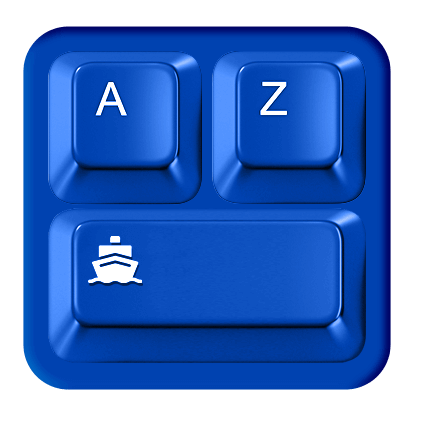| Term | Definition |
| Waiver | A waiver is a legal document needed when transporting goods to or through Central and Western African countries. Before any shipments are delivered to the port, the waiver must be submitted. The waiver includes information on the exporter or importer, shipment value, shipping method and type, freight cost, and vessel name. |
| Warehouse | A warehouse is a building or other space in which merchandise or commodities are stored. Most warehouses are designed to store goods until they are needed, at which point they are retrieved and either used or sold. Often, warehouses store goods that are not required immediately but are expected to be needed in the future. |
| Warehouse Exchange | Warehouse Exchange is a marketplace for businesses to find and list warehouses for rent. The site offers a searchable database of warehouses and a forum for users to discuss warehouse-related topics. Warehouse Exchange is a helpful tool for businesses looking for storage space. |
| Warehouse Logistics | Warehouse logistics is organizing and managing the storage and distribution of goods and materials within a warehouse. It includes the receiving, storing, and shipping of products and materials and the organization and management of the associated information. |
| Warehouse Logistics Software | A warehouse logistics software is a system that helps to optimize the storage and distribution of goods within a warehouse. The system can track inventory levels, order history, and shipping information to help streamline operations and improve efficiency. |
| Warehouse Management | Warehouse management is controlling and coordinating the activities within a warehouse. This includes the receiving, storing, and shipping of goods and materials. Warehouse management also involves managing the people who work in the warehouse. |
| Warehouse Management Software | A warehouse management software is an application that helps businesses track and manage their inventory levels, orders, and shipping logistics. By keeping track of all these aspects of their business in one place, companies can more easily manage their stock levels, plan for upcoming orders, and ensure that their products are shipped promptly and efficiently. |
| Warehouse Management System | A warehouse management system (WMS) is a software application that supports the day-to-day operations in a warehouse. A warehouse management system can help to track inventory levels, orders, and deliveries. It can also help to optimize the use of space in a warehouse and improve the efficiency of picking and packing orders. |
| Warehouse Organization | Warehouse organization is the process of planning and executing the storage and retrieval of goods and materials in a warehouse. An effective warehouse organization system can help improve warehouse operations’ efficiency and reduce the cost of goods and materials storage. |
| Warehouse Planning | Warehouse planning is designing and optimizing a facility for storing and distributing goods. The goal of warehouse planning is to create a layout and design that maximizes efficiency and productivity while minimizing cost and risk. The planning of material flows, the planning of conveying and handling equipment, and the design of the warehouse infrastructure all fall under the umbrella of warehouse planning, a subset of factory planning. |
| Warehouse Processing | In a warehouse, processing typically refers to the activities carried out on products or materials to prepare for storage or shipment. These activities can include sorting, labeling, packing, and unpacking. |
| Warehouse Receipt | A warehouse receipt is a script that proves that a certain amount of a commodity has been stored in a warehouse. The warehouse receipt is then produced once the warehouse keeper certifies that the inbound products have been received or delivered for storage. |
| Warehouse Regulation | A warehouse regulation is a rule or set of rules governing the operation of a warehouse, including the storage, handling, and shipping of goods. Warehouse regulations are necessary because they help to ensure the safety of goods and workers and to promote efficiency in the operation of the warehouse. Some standard warehouse regulations include the storage of hazardous materials, the labeling of storage areas, the use of personal protective equipment, and the reporting of accidents and injuries. |
| Warehouse Software | A warehouse software is a computer program that helps to track and manage inventory in a warehouse. This type of software can be used to track the movement of goods in and out of the warehouse and monitor inventory levels. The software can also be used to generate reports on the status of the inventory and to help with the planning of future inventory needs. |
| Warehouse Strategies | Warehouse strategies are the plans and methods used to store and retrieve inventory in a warehouse efficiently. The goal of warehouse strategies is to reduce the cost of inventory storage and retrieval while maximizing space utilization and ensuring product availability. |
| Warehouse Technology | Warehouse technology is the application of technology to the efficient operation of a warehouse. This can include warehouse management, order fulfillment, and inventory control technology. |
| Warehouse Use | A warehouse is a type of commercial structure used to store products. The use of a warehouse depends on the condition of the warehouse or storage area. The storage rooms need to be outfitted appropriately based on the stored items. |
| Waste Management Logistics | Waste management logistics refers to planning and coordinating activities related to collecting, transporting, and disposing of waste materials. Both economic and environmental goals determine logistics for waste management. Waste management logistics actively help solve ecological issues by performing waste management tasks, highlighting the importance of logistics in environmental preservation. |
| Waybill | A waybill is a document to track the movement of goods and materials. The waybill typically contains information about the origin and destination of the goods and a description of the items being shipped. Waybills are used by businesses to track inventory and ensure that goods are delivered to the correct locations. |
| Workflow | A workflow is a set of defined steps that must be completed to complete a task. In business, a workflow is often used to describe the steps that must be completed to complete a business process. |
| World Trade Organization (WTO) | The World Trade Organization (WTO) is the only global international organization dealing trade rules between nations. Its core components are the WTO agreements, which set the legal parameters for global trade and trade policy. |
All shipments in one place
We are with you until the end






